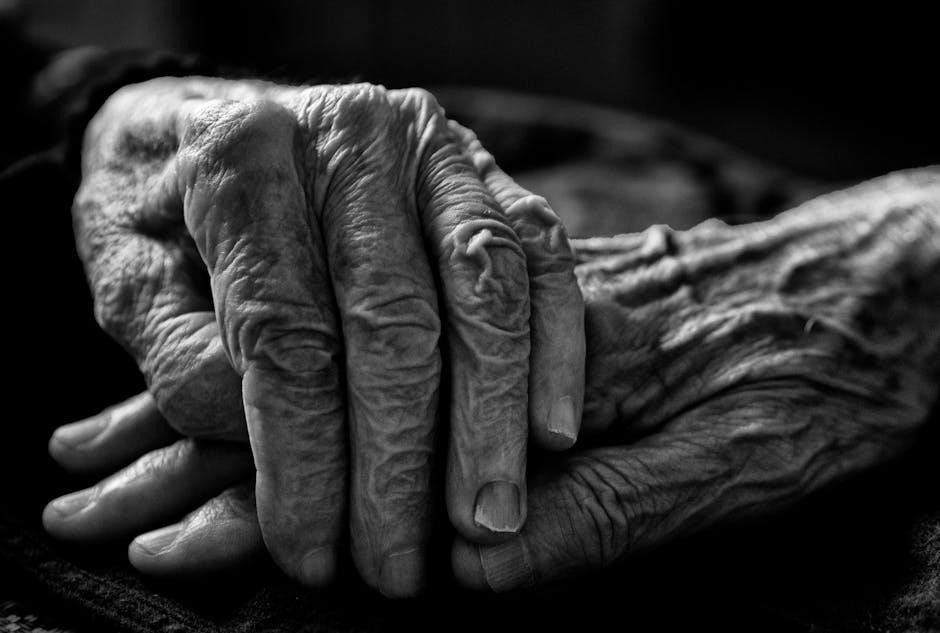
Bits, Bytes, and the Story of Digital Information
This section delves into the fundamental units of digital information: bits and bytes. We’ll explore their origins, how they represent data, and their evolution in computing. Understanding bits and bytes is crucial for comprehending how computers store and process information, from simple text to complex programs.
In the realm of computers, data is represented using bits and bytes. A bit, short for “binary digit,” is the most basic unit of information, representing either a 0 or a 1. These seemingly simple units form the foundation of all digital data.
Bytes, on the other hand, are groups of bits. Historically, the number of bits in a byte varied, but today, a byte almost universally consists of 8 bits. This standardization has allowed for consistent representation of characters, symbols, and other data types.
Understanding bits and bytes is crucial for grasping how computers store and process information. They are the building blocks of everything from text documents to images to complex software programs. The concept of a byte has evolved over time, becoming the standard unit for measuring memory and storage capacity in modern computers. They are the starting point of the computer world.
Think of bits and bytes as the alphabet of the digital world, where bits are the individual letters, and bytes are the words formed from these letters. By combining bits into bytes, we can represent a vast array of information that computers can understand and manipulate.
The Bit: The Fundamental Unit
At the very heart of digital information lies the bit, the smallest unit of data a computer can process. The term “bit” is a portmanteau of “binary digit,” aptly describing its nature as a single binary value, either a 0 or a 1. These two states, 0 and 1, represent the foundation upon which all digital computation is built.
While a single bit can only represent two distinct values, its significance lies in its ability to be combined with other bits to create more complex representations. Imagine a light switch: it can be either on (1) or off (0). Similarly, a bit can be thought of as an electronic switch, storing one of these two states.
The concept of the bit was formalized by Claude Shannon in his groundbreaking 1948 paper, “A Mathematical Theory of Communication.” Shannon’s work laid the foundation for modern digital communications and information theory, establishing the bit as the fundamental unit of information.
Although a single bit might seem insignificant, its ability to represent a binary choice is the key to encoding vast amounts of information. It’s the smallest building block of storage in computers.
The Byte: Grouping Bits for Representation
While the bit is the fundamental unit, it’s rarely used in isolation. To represent more complex data, bits are grouped together into larger units, the most common of which is the byte. A byte is a collection of bits, and in modern computing, it almost universally consists of eight bits.
Think of a byte as a word formed from individual letters (bits). Just as letters combine to create meaningful words, bits combine to create meaningful data. With eight bits, a byte can represent 256 distinct values (28 = 256), ranging from 0 to 255. This range allows a byte to encode a single character, such as a letter, number, or symbol.

The byte’s ability to represent characters made it the smallest addressable unit of memory in many early computer architectures. This means that computers could access and manipulate data in chunks of one byte at a time. The byte became the basic unit for measuring file sizes, memory capacity, and data transfer rates.
The concept of the byte was crucial for enabling computers to process and store textual information efficiently. It provided a practical and manageable unit for representing data, paving the way for more advanced computing applications.
Historical Context: Early Byte Sizes
While today the term “byte” almost universally refers to a group of eight bits, this wasn’t always the case. In the early days of computing, the size of a byte was not standardized and varied depending on the computer architecture and its intended use. Different machines employed different bit groupings to represent characters and other data.
Some early systems used bytes consisting of six or seven bits. These smaller byte sizes were often sufficient for representing a limited character set, such as uppercase letters, numbers, and basic symbols. As technology evolved and the need to represent a wider range of characters and data grew, the limitations of these smaller byte sizes became apparent.
The lack of standardization in byte size created challenges for data interchange between different systems. Programs and data files created on one machine might not be compatible with another due to the different byte sizes used. This fragmentation hindered the development of portable software and data formats.
The move towards a standardized byte size was driven by the need for greater interoperability and efficiency. The adoption of the 8-bit byte as a standard represented a significant step forward in the evolution of computing.

Werner Buchholz and the Origin of the Term “Byte”

The term “byte,” now synonymous with a unit of eight bits, has an interesting origin story rooted in the early days of IBM. In 1956, Werner Buchholz, a computer scientist working at IBM, coined the term while working on the Stretch project, a groundbreaking supercomputer. Buchholz needed a way to refer to a group of bits that was larger than a single bit but smaller than a word, which at the time could vary in size considerably.
The term “byte” was chosen as a playful variation of the word “bite,” suggesting a small chunk of data. It was also intentionally chosen to be easily pronounceable and distinct from other technical terms. Although the Stretch project initially used a variable byte size, the term “byte” stuck and eventually became associated with the 8-bit grouping that we know today.
Buchholz’s contribution was not only in coining the term but also in recognizing the need for a standard unit of data that could be easily manipulated and addressed by computer systems. While other terms were proposed, “byte” proved to be the most memorable and widely adopted, solidifying Buchholz’s place in the history of computing.
The Standardization of the 8-Bit Byte
While Werner Buchholz coined the term “byte,” its standardization to an 8-bit unit wasn’t immediate. Early computer systems used varying byte sizes, often dictated by hardware architectures and the need to represent characters efficiently. However, the rise of the System/360 architecture by IBM in the 1960s played a pivotal role in establishing the 8-bit byte as the de facto standard.
The System/360 was designed to be a versatile and scalable system, capable of handling both commercial and scientific workloads. Its designers chose an 8-bit byte, also known as an octet, as the fundamental unit of memory addressing. This decision was influenced by the need to represent a wide range of characters, including uppercase and lowercase letters, numbers, punctuation marks, and control codes.
The 8-bit byte provided 256 distinct values (2^8), which was sufficient for encoding the Extended Binary Coded Decimal Interchange Code (EBCDIC), an 8-bit character encoding developed by IBM. As the System/360 gained widespread adoption, the 8-bit byte became increasingly prevalent, paving the way for its eventual standardization across the industry. The standardization of the 8-bit byte greatly simplified data representation and exchange between different computer systems.
Bytes as Addressable Units of Memory
In most modern computer architectures, the byte serves as the smallest addressable unit of memory. This means that the computer’s memory is organized as a sequence of bytes, each with a unique address. The CPU can directly access and manipulate individual bytes in memory using these addresses. This byte-addressable memory architecture is a cornerstone of how computers store and retrieve data.
The ability to address individual bytes provides a fine-grained level of control over memory management, allowing programmers to work with data at a granular level. This is essential for tasks such as manipulating character strings, storing numerical values, and implementing complex data structures.
While modern processors often work with larger chunks of data, such as 64-bit words, the underlying memory architecture remains byte-addressable. This means that even when a processor reads or writes a 64-bit word, it is still ultimately accessing a sequence of eight individual bytes in memory. The byte-addressable nature of memory has profound implications for how data is organized, accessed, and manipulated in computer systems.

The Relationship Between Bits and Bytes
The fundamental relationship between bits and bytes is that a byte is composed of bits. Specifically, one byte consists of eight bits. This fixed relationship is crucial for understanding how digital information is structured and processed. A bit, representing a binary digit (0 or 1), is the smallest unit of information, while the byte provides a grouping of bits that can represent a wider range of values.
The byte’s eight-bit structure allows for 256 different combinations of 0s and 1s (2^8 = 256). This range is sufficient to represent a variety of characters, symbols, and numerical values. The byte serves as the basic building block for encoding text, images, audio, and other forms of data.
The relationship between bits and bytes also affects data transmission and storage. Data transfer rates are often measured in bits per second (bps), while storage capacities are typically measured in bytes (B) or multiples thereof (KB, MB, GB, etc.). Understanding the difference between bits and bytes is essential for interpreting these measurements correctly.
Representing Characters and Symbols with Bytes
Bytes play a crucial role in representing characters and symbols within computer systems. Each character, whether it’s a letter, number, punctuation mark, or special symbol, is assigned a unique numerical value. This numerical value is then encoded using a byte, which provides a standardized way to represent textual information.
The most common encoding scheme for characters is ASCII (American Standard Code for Information Interchange), which uses 7 bits to represent . However, extended ASCII and other encoding schemes like UTF-8 utilize the full 8 bits of a byte, allowing for the representation of 256 different characters. This expanded range enables the inclusion of accented characters, symbols from various languages, and other specialized characters.
When a character is typed on a keyboard, the corresponding byte value is sent to the computer, which then interprets it and displays the appropriate character on the screen. Similarly, when text is stored in a file, it is saved as a sequence of bytes, each representing a specific character.
Evolution of Data Measurement Units
The evolution of data measurement units reflects the ever-increasing capacity of digital storage and processing. Starting with the fundamental bit and byte, the need for larger units became apparent as technology advanced. The kilobyte (KB), representing 1024 bytes, emerged as an early standard, followed by the megabyte (MB), gigabyte (GB), and terabyte (TB).
These units, based on powers of 2, provided a convenient way to quantify the size of files, storage devices, and network bandwidth. As data volumes continued to explode, even larger units like petabytes (PB), exabytes (EB), zettabytes (ZB), and yottabytes (YB) were introduced to accommodate the exponential growth.
It’s important to note that the definition of these units has sometimes been debated, with some advocating for decimal-based units (powers of 10) to align with the metric system. However, the binary-based units (powers of 2) remain the dominant standard in the computing world.
The ongoing evolution of data measurement units underscores the relentless pace of technological advancement and the ever-increasing demand for storage and processing capacity.
Bits and Bytes in Modern Computing
In modern computing, bits and bytes remain the bedrock of digital information. While higher-level abstractions and complex data structures are used, everything ultimately boils down to these fundamental units. Processors manipulate data in terms of bits and bytes, memory is addressed in bytes, and storage devices store data as sequences of bits.
Understanding bits and bytes is essential for tasks such as optimizing code, understanding network protocols, and working with low-level hardware interfaces. Modern programming languages provide abstractions that hide the details of bit and byte manipulation, but a solid understanding of these concepts can be invaluable for debugging and performance tuning.
Furthermore, the concept of the byte as the smallest addressable unit of memory continues to influence computer architecture. While some architectures may use larger word sizes, the byte remains the fundamental building block for memory organization. As computing continues to evolve, bits and bytes will undoubtedly remain at the core of how we store, process, and transmit information.




